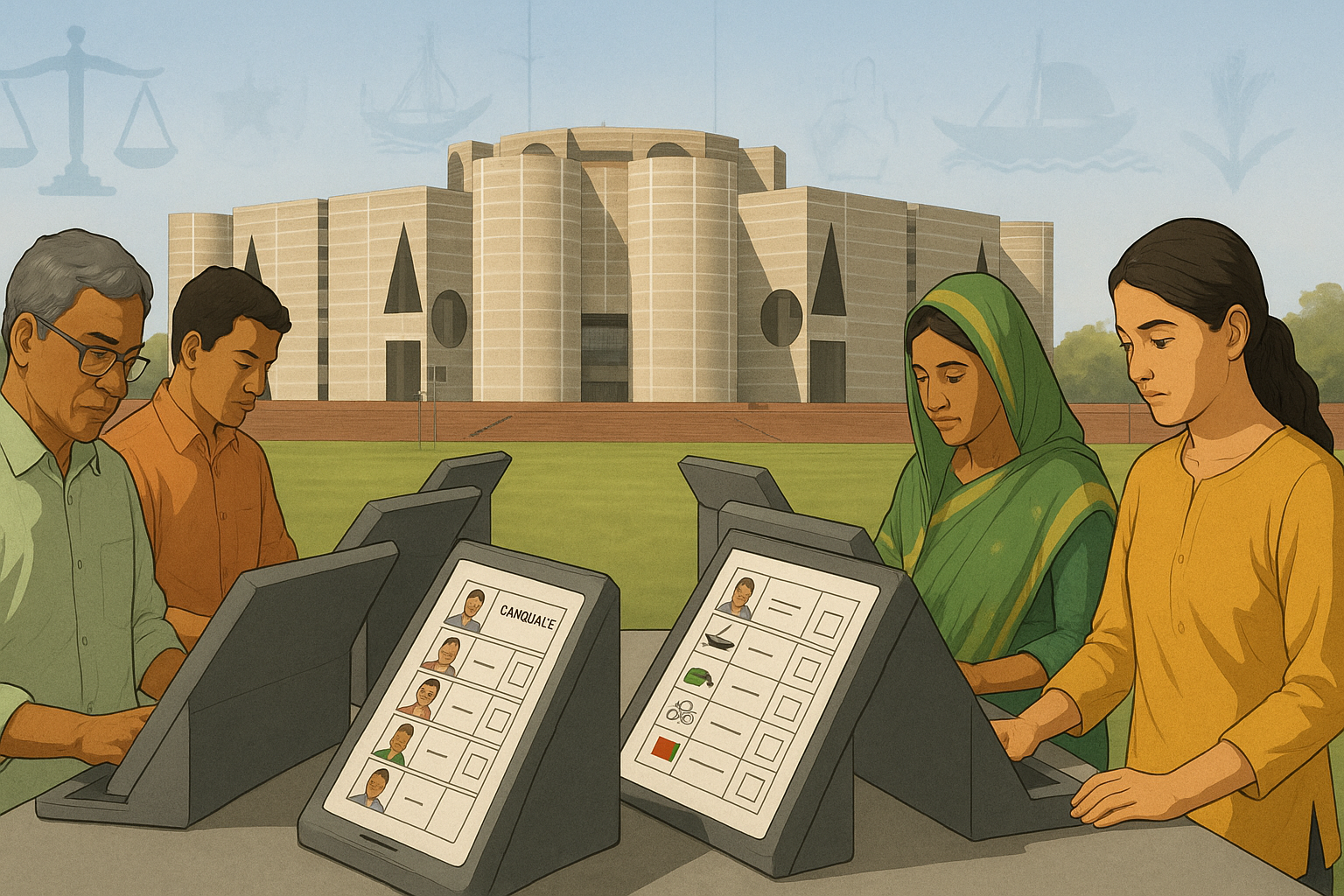The Legacy of Panchila Gamcha Market
The Panchila Gamcha Market in Tangail is more than just a marketplace. It is a living museum of Bangladesh’s handloom heritage, a symbol of rural resilience, and an echo of generations of artistry. For over 100 years, this traditional market has served as the heart of the Gamcha industry, connecting thousands of weavers, traders, and buyers who keep one of the nation’s oldest crafts alive.
Located in Panchila village under Tangail District, this historic market continues to attract buyers from across the country, despite modern textile industries dominating the national market. The market stands as a proud reminder of Bangladesh’s cultural and economic roots, proving that tradition can coexist with modernization.
You can learn more about Bangladesh’s handloom industries and rural markets from sources like Bangladesh Handloom Board and The Daily Star.
History of Panchila Gamcha Market
The origins of the Panchila Gamcha Market trace back to the early 20th century, during the British colonial period. It began as a small weekly haat where local weavers gathered to sell handmade gamchas produced in nearby villages. These simple yet durable cotton towels quickly became essential for daily life across Bengal.
Over the decades, the market grew in size and reputation. Traders from Dhaka, Mymensingh, and even Kolkata once visited Panchila to buy authentic Tangail gamchas. The craftsmanship, passed down from generation to generation, has remained rooted in handloom tradition.
Even after 100 years, the essence of Panchila remains unchanged. On market days, the air fills with the rhythmic sound of looms, the chatter of traders, and the colorful display of check-patterned cotton towels hanging in every stall.
Economic Role of Panchila Gamcha Market
The Panchila Gamcha Market plays a vital role in sustaining Tangail’s rural economy. According to recent data from local cooperatives, over 3,000 families in the surrounding area depend directly or indirectly on gamcha weaving, dyeing, spinning, and trading.
Weaving remains a family-based profession. In most cases, men operate the looms, while women handle spinning and dyeing. This collaborative system not only supports households but also empowers women to contribute to the family income.
The market connects local weavers to wholesalers and national retailers. Traders from Dhaka, Chattogram, and Rajshahi often buy in bulk for resale. Despite facing competition from factory-made textiles, the Panchila market continues to thrive due to the authenticity and durability of its handwoven products.
To understand the economic significance of handloom markets, visit Bangladesh Textile Today or the World Bank’s rural development reports.
Cultural Symbolism of the Gamcha
The gamcha is more than just a towel. It is a symbol of Bangladeshi identity. Farmers, laborers, and rickshaw pullers have relied on it for generations, not only as a practical tool but also as a cultural emblem.
In Bengali tradition, the gamcha is often gifted during ceremonies, weddings, and religious events. Artists, poets, and political activists have worn it around their shoulders as a sign of simplicity, solidarity, and pride.
The Panchila Gamcha Market preserves this cultural heritage by ensuring that every handwoven piece tells a story. Each pattern, color, and weave carries a fragment of Bangladesh’s rural spirit.
The Weavers Behind the Craft
The real heroes of the Panchila Gamcha Market are the artisans who work tirelessly at their looms. Many come from families that have practiced the craft for several generations.
Weavers typically start their day before sunrise. They spin cotton threads, prepare dyes, and operate wooden looms in small workshops beside their homes. The process is entirely manual, demanding patience, skill, and precision.
A single gamcha can take four to six hours to complete, depending on design complexity. Despite the hard work, profit margins remain thin. Rising cotton prices and declining demand have made life difficult for many traditional artisans. Yet, their dedication continues to sustain this century-old tradition.
Modern Challenges Facing Panchila Gamcha Market
Like many traditional industries, the Panchila Gamcha Market faces growing challenges. Machine-made fabrics and imported textiles have reduced demand for handmade products. The younger generation, seeking faster income, often avoids joining the family trade.
Additionally, a lack of government support, limited branding, and poor online marketing prevent these crafts from reaching wider audiences. Climate change also poses risks, as floods and humidity can damage raw cotton and dyeing materials.
However, there is hope. NGOs and local entrepreneurs are working to modernize production methods without losing the traditional essence. Projects focusing on design innovation, packaging, and e-commerce are helping revive market visibility.
A Symbol of Sustainable Craftsmanship
In an era dominated by fast fashion, the Panchila Gamcha Market represents sustainability. The entire production process is eco-friendly. Weavers use minimal machinery, natural fibers, and vegetable dyes, which make gamchas biodegradable and environmentally safe.
This sustainable approach aligns with global movements supporting ethical fashion and handmade crafts. As consumers around the world move toward sustainable choices, Bangladesh’s traditional gamchas could find new markets internationally.
Exporting handwoven textiles not only preserves craftsmanship but also supports the national economy. Tangail’s artisans have already received inquiries from cultural fashion brands looking to collaborate on eco-conscious textile lines.
Tourism and Cultural Attraction
Panchila is more than a trade hub; it is becoming a tourist attraction for those interested in Bangladesh’s rural lifestyle and craft heritage. Visitors can witness live weaving sessions, interact with artisans, and purchase gamchas directly from the market.
Local tourism boards are promoting Panchila as a handloom heritage destination, similar to how India promotes its textile villages. Tourists exploring Tangail for its sarees and traditional foods often make stops at the Gamcha Market to experience authentic craftsmanship.
Cultural photographers and documentary makers have also started capturing its vibrant atmosphere to showcase how tradition survives in the modern world.
Future Prospects and Revival Efforts
The future of the Panchila Gamcha Market depends on innovation, policy support, and community involvement. With government aid and the introduction of microcredit for weavers, the market can thrive again.
Digital transformation can also play a major role. If local producers get access to online platforms, they can connect directly with customers worldwide. This would increase profits and inspire younger generations to stay in the trade.
Educational institutions can help too. By documenting and teaching gamcha weaving as part of Bangladesh’s cultural studies, we can preserve this heritage for future generations.
A Living Heritage of Bangladesh
The Panchila Gamcha Market stands as a bridge between the past and the present. It embodies Bangladesh’s enduring creativity, self-reliance, and rural strength. Even after a century, the market continues to weave not just cloth, but community, culture, and hope.
In a rapidly changing world, Panchila reminds us that the value of tradition lies not only in what we produce but in what we preserve. It is a story of people who have turned threads into legacy, keeping Bangladesh’s heritage alive, one Gamcha at a time.








